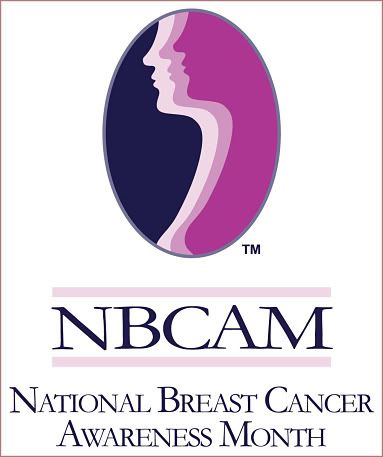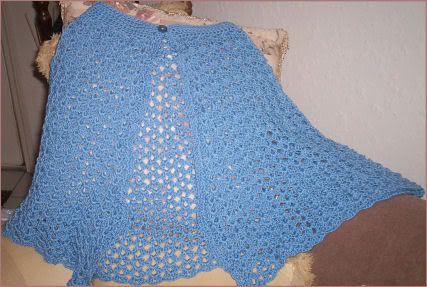
Breast cancer is the second-leading cause of cancer deaths in American women. I know this only to well as the 3 generations that came before me have all had breast cancer. My great grandmother had it the first time when she was in her early 30's and then again in her late 30's. She was a survivor because she sought out treatment right away. She was a wonderful woman I remember with fondness and a smile. She died of old age when I was 12 years old.
My grandmother was in her mid to late 50's when she first noticed, and subsequently ignored that she had something wrong. It wasn't until my grandfather passed away that her daughters actually saw what had become of her breasts. You see, Grandma was in a bad way emotionally and needed prodding to take care of herself and realize that she still had a life to live. It was during this time that the 'girls' took her shopping for clothes because she had lost so much weight. Needless to say, they were horrified by what they saw. The cancer had migrated beyond her breasts thus requiring chemo in an attempt to stop its progression and shrink it down. Fortunately, other than losing her hair, the chemo didn't make Grandma sick. I would take her to get her treatment and then we would stop someplace for a cup of coffee and a piece of pie. We had a lot of fun together despite what she was going through. Sadly, the chemo didn't work for long and the cancer spread to her lungs and bones. When I last saw her before she passed away she was not only suffering terribly, but was so thin you could see all of her bones. Sometimes it's really difficult to remember her as she was before the cancer. Instead I'm stuck with these memories of her in her final days, laying in that hospital bed a mere shadow of who she was just wasting away.
My mother also had breast cancer. She didn't go for mammogram because she had one that hurt quite a bit. I tried in vain to get her to schedule appointments and go the same time I went. My daughter also tried to get her to go. Eight years later she sought out treatment when her cancer became painful and had spread from her breast up toward her shoulder. She had to undergo several months of chemo before any further treatment could be done as the cancer was rigidly affixed to connecting tissue. The chemo reduced the cancer somewhat so she was scheduled for a radical mastectomy. Sadly the cancer had spread through her lymph nodes so they had to be removed also. They were unable to remove everything so she had to go through several more months of chemo, followed by multiple radiation treatments.
It's been a three years and the cancer has not returned but she now spends her days in a residential care facility because she had a severe stroke and requires 24/7 care. Had she not been going through all that she did with the breast cancer, I have no doubt she would have discussed with her Dr. what she had going on as far as the symptoms she was experiencing regarding the blockage that led to the stroke. It's heartbreaking visiting with my mom. She for the most part is unable to communicate, is paralyzed on her right side and spends her days so heavily sedated in order to combat her pain that she mostly sleeps in her wheelchair. Her short term memory is pretty much non-existent but she for the most part has retained her lifetime memories which can be very frustrating for her given the condition she's in now.
Experts predict 178,000 women will develop breast cancer in the United States in 2007. Breast cancer can also occur in men, but it's far less common. For 2007, the predicted number of new breast cancers in men is 2,000.
Statistically I am a high-risk candidate for developing breast cancer. I am fortunate in that I am a patient at Mayo Clinic and was asked based on my family history, if I would be willing to meet with the Dr. who was conducting a research study. This meeting was no guarantee that I would be selected to participate; it was more a fact finding meeting to see if I qualified to participate based on a formulary developed by the Dr's as far as risk factors. Needless to say, I jumped at the chance and met with 3 different Dr's. After being examined and questioned extensively, I was asked to participate in the study that involves not only a yearly mammogram but also a breast MRI. Why? The purpose of the study was to show insurance companies that breast cancer could be detected much earlier through breast MRI for women at high risk than through a standard mammogram. MRI shows much more detail thus enables Dr's to spot suspicious areas for further investigation before they have a chance to spread into something life threatening.
Last year after my mammogram, which showed no abnormalities I went the same day for an MRI. My MRI, which takes about 1/2 hour showed an area that needed further checking. I was scheduled for another MRI that was done under sedation. The second MRI takes 4 to 5000 images that show abnormalities as small as a pinhead. Based on my second MRI I was scheduled for an ultra sound guided biopsy. This is the second biopsy I've had. The first was several years earlier in my other breast and turned out to be a compound cyst. The biopsy results indicated I had a fibro adenoma, which is a non-cancerous tumor. Phew! This year my mammogram and MRI were both fine.
This study has had fantastic results and saved many lives. Based on the findings, insurance companies are now covering breast MRI for women at high risk AND paying for follow up visits every 6 months for breast exams. I have no doubt this whole process will save many more lives. The first step however begins with you! Even if you aren't considered high risk, monthly breast exams are critical. After all, who knows your breasts better than you do? If you find a lump, no matter how small contact your Dr right away and have your yearly mammogram. What's a little discomfort compared to suffering through chemo, surgery and potential death? I've seen first hand what breast cancer can do when not taken care of right away. It's horrifying, devastating and in many cases, deadly.
If you don't have insurance and can't afford to pay for a mammogram there are many programs out there to help pay for it. Many hospitals and clinics also offer free screenings a couple times a year. Do some digging, get help if you have to and remember that early detection drastically increases your chances of survival.






